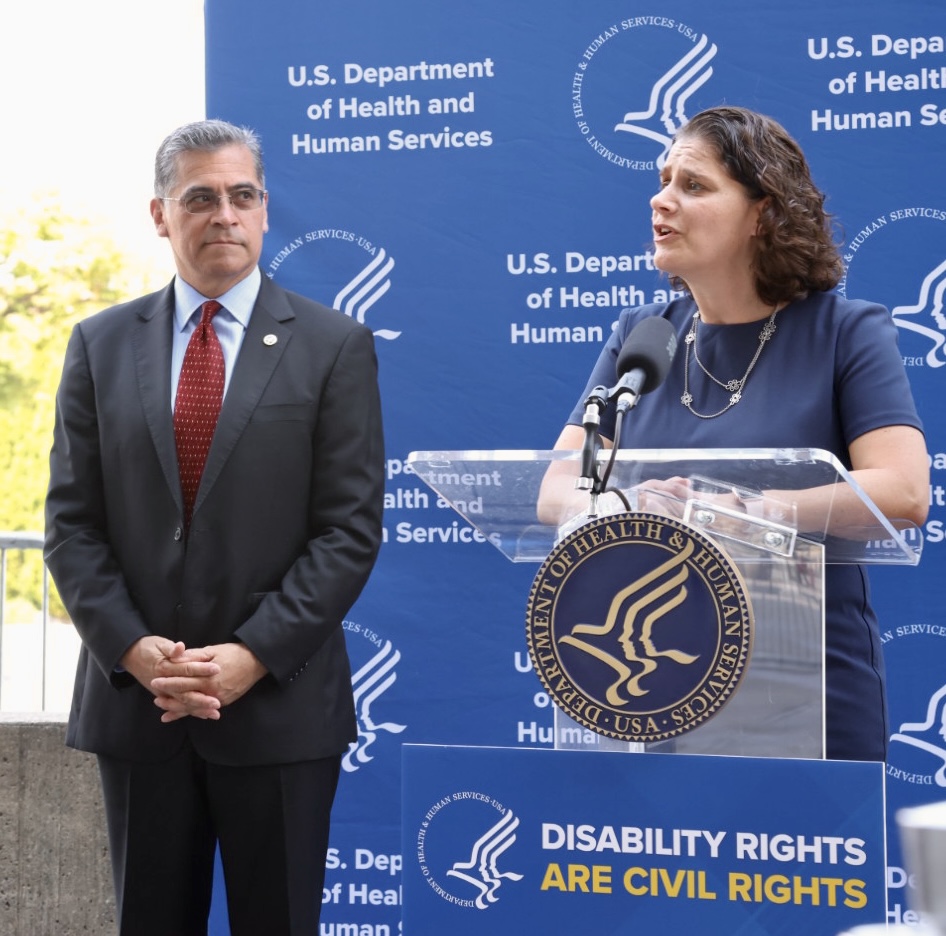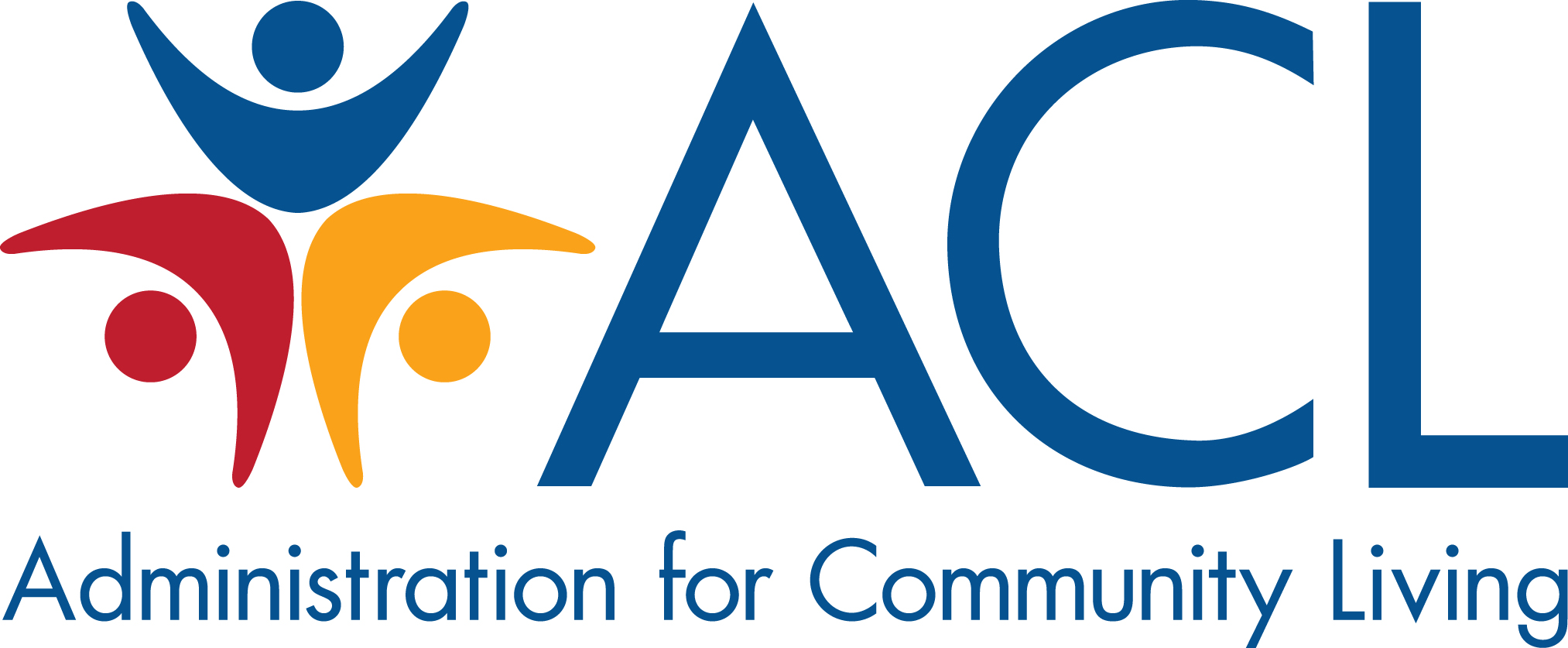
Earlier today, I had the honor of joining HHS Secretary Xavier Becerra, OCR Director Melanie Fontes Rainer, and CEO and President of the American Association of People with Disabilities Maria Town at a press conference to announce a rule proposed by the HHS Office for Civil Rights that would update regulations implementing Section 504 of the Rehabilitation Act of 1973, which prohibits disability discrimination by recipients of federal funding. (The event was recorded, and we will share a link as soon as the video is available.)
The Rehab Act was the first civil rights legislation protecting disabled people from discrimination. It has a broad reach, prohibiting discrimination on the basis of disability in “any program or activity receiving federal financial assistance.” Section 504 covers all health care and human services programs and activities funded by HHS, from hospitals and doctors that accept Medicare or Medicaid to states’ child welfare programs, for example. It protects disabled people of all ages — which includes older adults who need assistance with major life activities like walking, getting in and out of bed, hearing, or seeing, who may not even think of themselves as people with disabilities.
Although the Rehab Act was passed in 1973, enforcement of its critical civil rights provisions in Section 504 stalled while people with disabilities pushed the federal government to issue regulations to implement it. After nearly four years of advocacy, legal action, and protests — culminating in the now-iconic 26-day peaceful occupation of a federal building in San Francisco — the initial 504 regulations were signed.
In the years that have followed, Section 504 has opened doors to schools, public transportation, government services — and health care and human services — for people with disabilities. But the promises of Section 504 still remain unfulfilled for too many people. Virtually every disabled person can tell a story of discrimination they have experienced — being unable to get basic preventative health care like mammograms and pap smears because of inaccessible equipment; being unable to use an inaccessible kiosk at a doctor’s office; being told they aren’t eligible for an organ transplant because they “can’t take care of themselves;” or being told they aren’t fit to parent because they have a disability, just to name a few.
The consequences of this discrimination can be catastrophic, as we saw all too clearly — and often — during the COVID-19 pandemic. When ventilators were in short supply, people with disabilities often were placed at the end of the line, told their lives were worth less than non-disabled people. They were denied access to the people who provide the support they need to make decisions about treatment. And because they could not access the services and supports they needed to stay in the community, many had no choice but to live in nursing homes and other congregate settings where COVID-19 was rampant. Thousands of disabled people died as a result.
While many of these issues are not new, COVID-19 shone a spotlight on them and created momentum for change. That’s why the Biden-Harris Administration specifically recognized disabled people in its executive order on advancing equity and has prioritized strengthening civil rights protections for people with disabilities. Today’s proposed rule is one of several federal actions that strengthen anti-discrimination protections, and ensure equal opportunity, for people with disabilities. It complements the disability provisions in the proposed rule implementing Section 1557 of the Affordable Care Act published earlier this year, as well as the rule on web accessibility for public entities under the Americans with Disabilities Act (ADA) proposed by the Department of Justice (which is open for public comment through October 3, 2023).
The proposed update to the HHS Section 504 regulations clarifies obligations in several crucial areas that are not explicitly addressed in the current rule and improves consistency with legislative developments since the current regulations were issued. OCR has put together a detailed factsheet, and OCR and ACL will jointly host a webinar for stakeholders on the proposed rule on September 18 at 3:00 PM ET (register here).
Several highlights of the new areas in the proposed rule include:
- Discrimination in medical treatment: Ensures that medical treatment decisions are not based on biases or stereotypes about people with disabilities, judgments that an individual will be a burden on others, or beliefs that the life of an individual with a disability has less value than the life of a person without a disability. These include, for example, decisions about life-sustaining treatment, organ transplantation, rationing care in emergencies, and other vital medical decisions.
- Accessibility of medical equipment: Adopts the U.S. Access Board’s accessibility standards for medical equipment to address barriers like exam tables that are inaccessible because they are not height-adjustable, weight scales that cannot accommodate people who use wheelchairs, and mammogram machines that require an individual to stand to use them. The rule would require most doctor’s offices to have an accessible exam table and weight-scale within two years.
- Web, mobile app, and kiosk accessibility: Adopts the Web Content Accessibility Guidelines (WCAG) 2.1, Level AA accessibility standards for websites and mobile applications. It also requires self-service kiosks to be accessible. These provisions are particularly important given the increased use of websites, apps, telehealth, video platforms, and self-service kiosks to access health care.
- Child welfare programs and activities: Clarifies requirements in HHS-funded child welfare programs and activities to help eliminate discriminatory barriers faced by children, parents, caregivers, foster parents, and prospective parents with disabilities, such using the presence of a disability or an individual’s IQ score alone as a reason for removal of a child, prohibiting disabled parents from serving as foster parents, or failing to place disabled children who need services in the most integrated settings appropriate to their needs.
- Community integration: Clarifies obligations to provide services in the most integrated setting appropriate to a person’s needs, consistent with the Supreme Court’s decision in Olmstead v. L.C. This provision has been central to vindicating the right to community living.
- Value assessment methods: To establish whether a particular intervention, such as a medicine or treatment, will be provided and under what circumstances, health care organizations often use a variety of methods to evaluate whether the benefits of the intervention outweigh the costs. These “value assessment methods” are an increasingly significant tool for cost containment and quality improvement efforts, but they may discriminate against people with disabilities when they place a lower value on extending the life of a person with disability. The proposed rule prohibits the discriminatory use of such methods to deny or limit access to aids, benefits, or services.
Since the 504 regulations were originally published, the Rehabilitation Act has been amended and the ADA was passed. Because Congress directed that Section 504 and the ADA be interpreted consistently, the proposed rule also aligns HHS’ 504 regulations with newer ADA regulations. For example, the proposed rule requires recipients of HHS funding to allow the use of trained service animals in most circumstances and to ensure effective communications by providing, when necessary, accommodations such as qualified interpreters, text telephones, and information in Braille, large print, or electronically for use with a computer screen-reading program.
For 60 days starting on September 14, HHS will be seeking public comment on the proposed rule. Input from the disability and aging communities is essential! (We will share instructions for submitting comments, as soon as the information is available.)
The updated Section 504 rule will be a critical tool for fighting disability discrimination, and ACL is proud to have worked with OCR in developing it. Of course, these updated regulations are only the first step. Once finalized, ACL is committed to supporting OCR’s technical assistance and enforcement efforts to translate the new rule into reality.
This is the disability community’s rule. It reflects your input, the issues you have raised, and your priorities. We look forward to your input on the proposed rule. Thank you for your advocacy, your partnership, and your hard work to make the world a more just place for everyone.
Learn more:
- Stakeholder Call: On Monday, September 18, at 3:00 PM, the Office for Civil Rights will walk through key provisions of the proposed rule in a webinar hosted by ACL. The webinar will be recorded, and ASL and CART will be provided. Advance registration is required.
- Fact sheet from the HHS Office for Civil Rights (available in multiple languages)
- Press Release: HHS Issues New Proposed Rule to Strengthen Prohibitions Against Discrimination on the Basis of a Disability in Health Care and Human Services Programs
- Federal Register notice: Full text of the proposed regulations
- About the Rehabilitation Act of 1973
We’ve compiled all the resources listed here into one webpage that can be found on ACL.gov/504rule.
Note: This post was updated on 9/12/23 to reflect a new date, time and registration link for the stakeholder call, which was rescheduled from its originally planned time.

